Periodic Table Project Makes Headlines at National ACS Conference
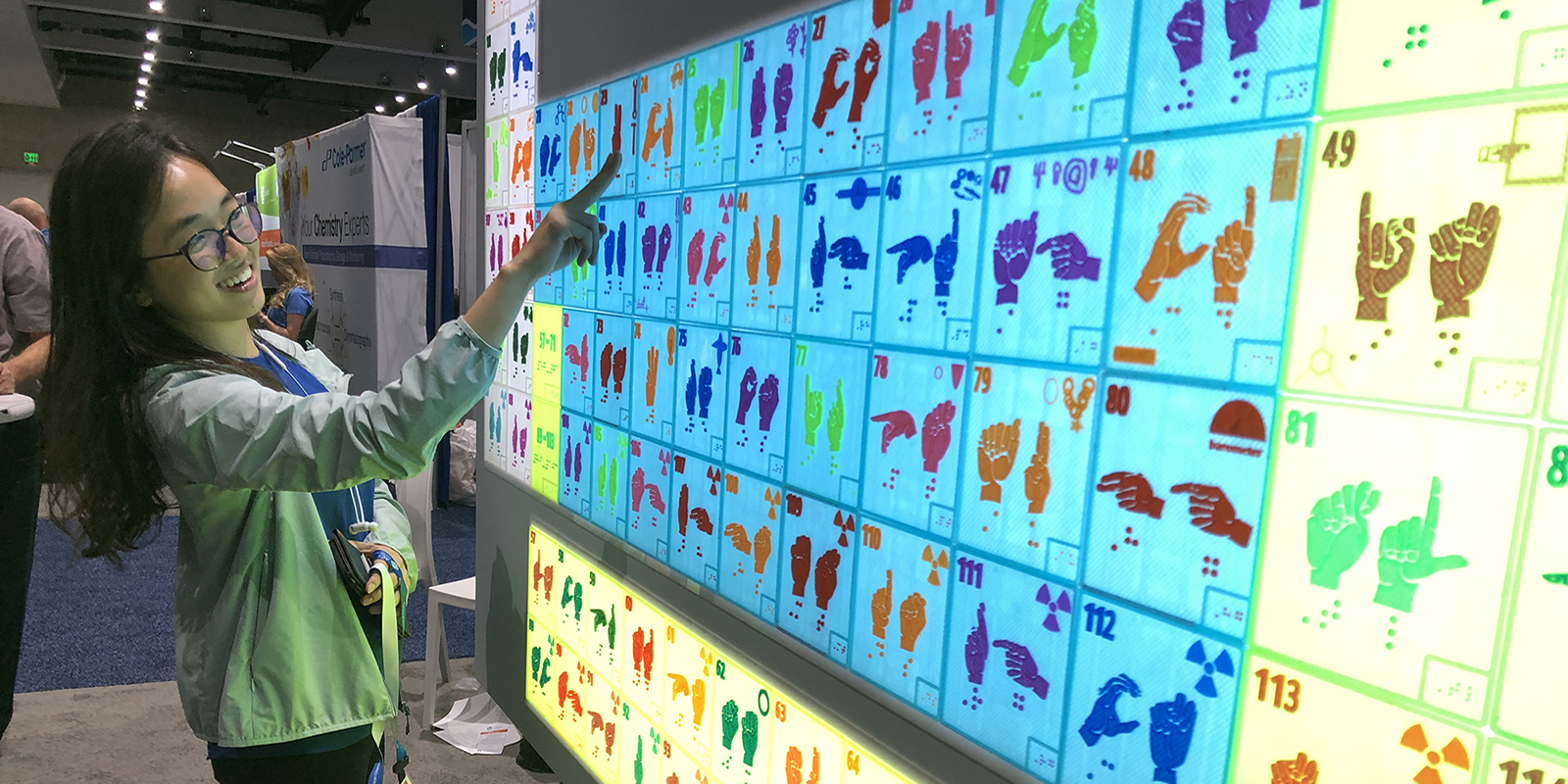
At the American Chemical Society Fall 2019 National Meeting in San Diego, the ACS Committee on Chemists with Disabilities displayed an accessible periodic table that featured braille and sign language 3-D printed onto every element tile. The project celebrates the International Year of the Periodic Table and its discovery 150 years ago by Dmitri Mendeleev. Through the use of accessible technology, the table serves to remind those engaging with it of the scientists both with and without disabilities who have contributed to the creation of the periodic table.
More than 12,000 people attended the conference with many visiting the periodic table display among some 260 informational booths.
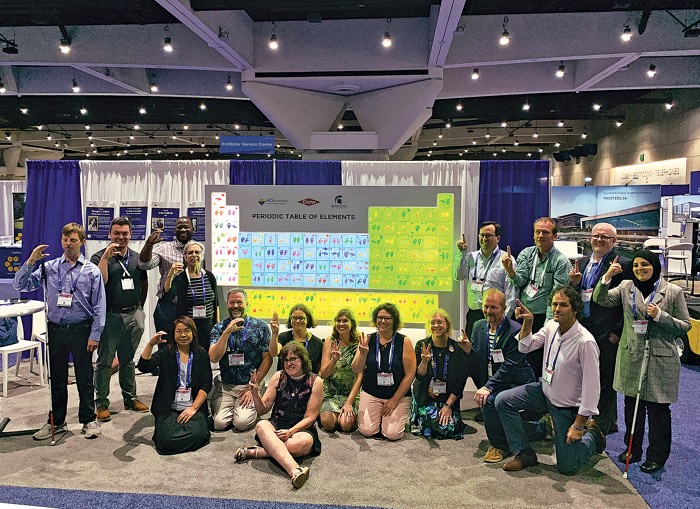
The idea was initiated by the Committee on Chemists with Disabilities and through their connection with Dow, a collaboration was formed with students from MSU St. Andrews in Midland, Michigan. MSU St. Andrews provides learning opportunities in science, technology, engineering, arts, and mathematics (STEAM) for youth, families and teachers.
The letter symbols that easily identify the elements were intentionally absent from each tile to simulate the challenges that a person with a disability may encounter in accessing the table.
“The display ignited conversations about disabilities and accommodations like I have never observed before – it emotionally connected with the scientific community,” said Michelle Cummings, research scientist at Dow and key contact for the project. “The combination of tactile and visually stimulating design highlighting both sign language and braille, created a unique one of a kind interactive display — perfect for the International Year of the Periodic Table.”
The table took several months to complete with over 30 students aged 7 to 17 participating. Students first attended workshops at MSU St. Andrews to learn computer-aided design and 3-D printing techniques. Each student selected the elements they wanted to learn more about, then designed any decorative components to add to their tiles. Finally, they combined the results with signing hands and braille from a template and printed their tiles with 3-D printers.
“Working with MSU on this project was a great experience. They embraced the challenge by doing what we as scientists are trained to do. They researched, asked questions, refined ideas, experimented and delivered! The excitement for this project was contagious,” stated Cummings. “I was able to talk with the kids that designed the various element tiles. I was so impressed with their new awareness of sign language and braille as a result of their research, as well as the dedication by Dr. Tracy Zhang to mentor these students.”
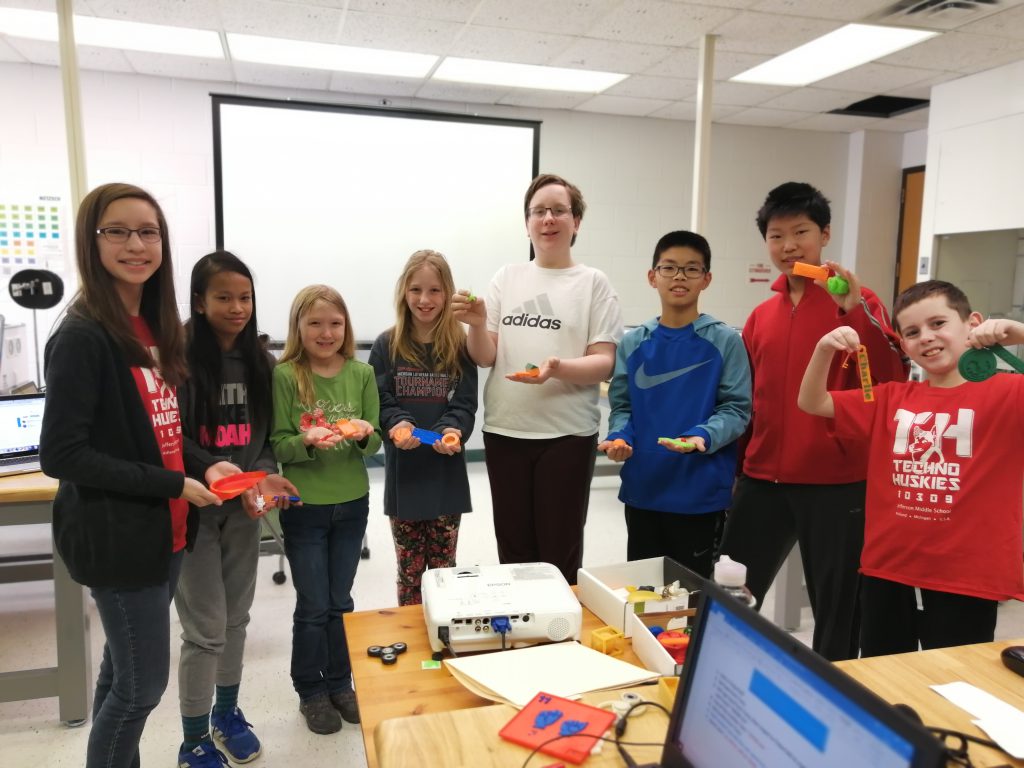
Robotics group learning how to 3D print! 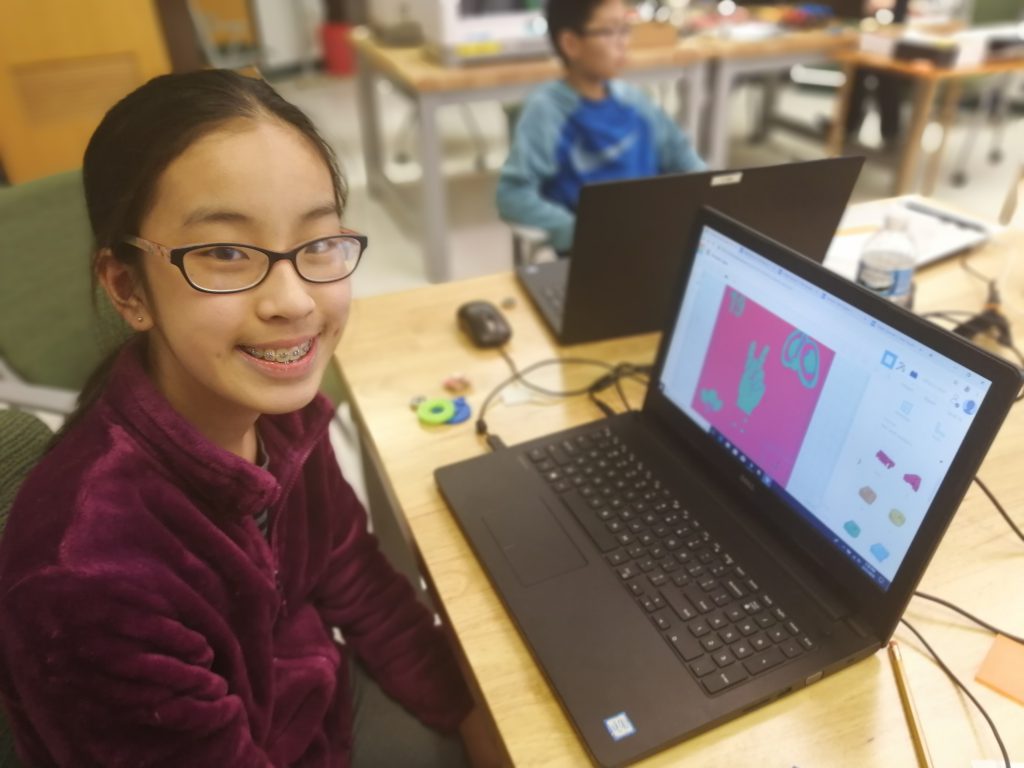
Sarah, Jefferson Middle School 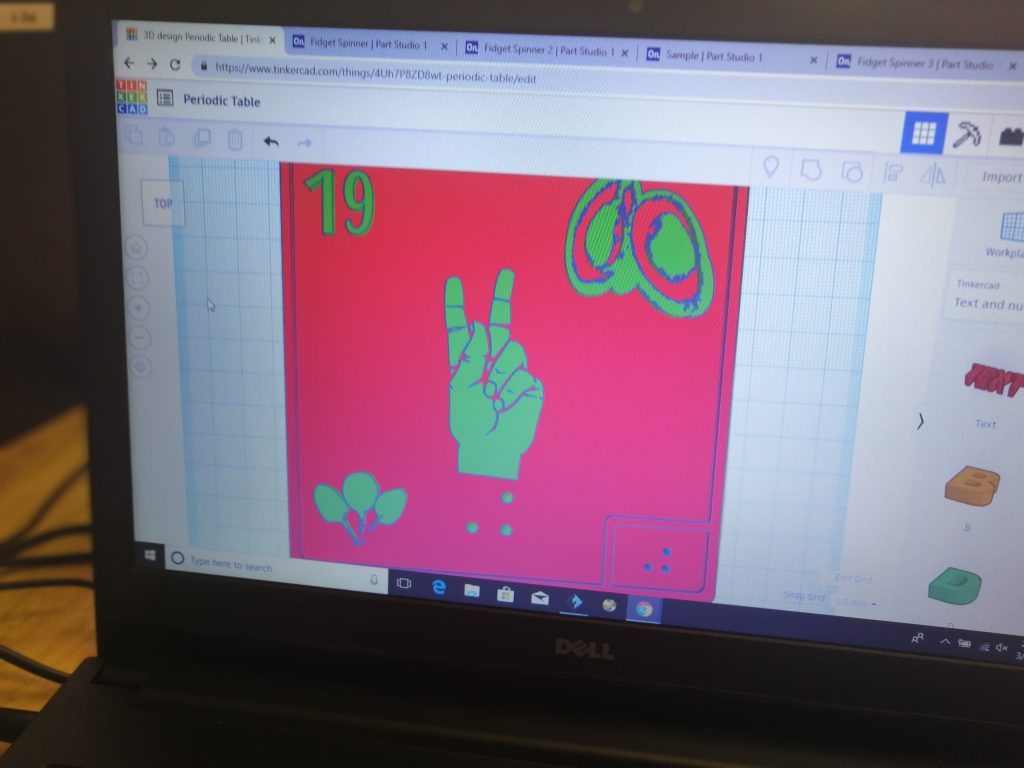
Computer aided design creates the images on screen. 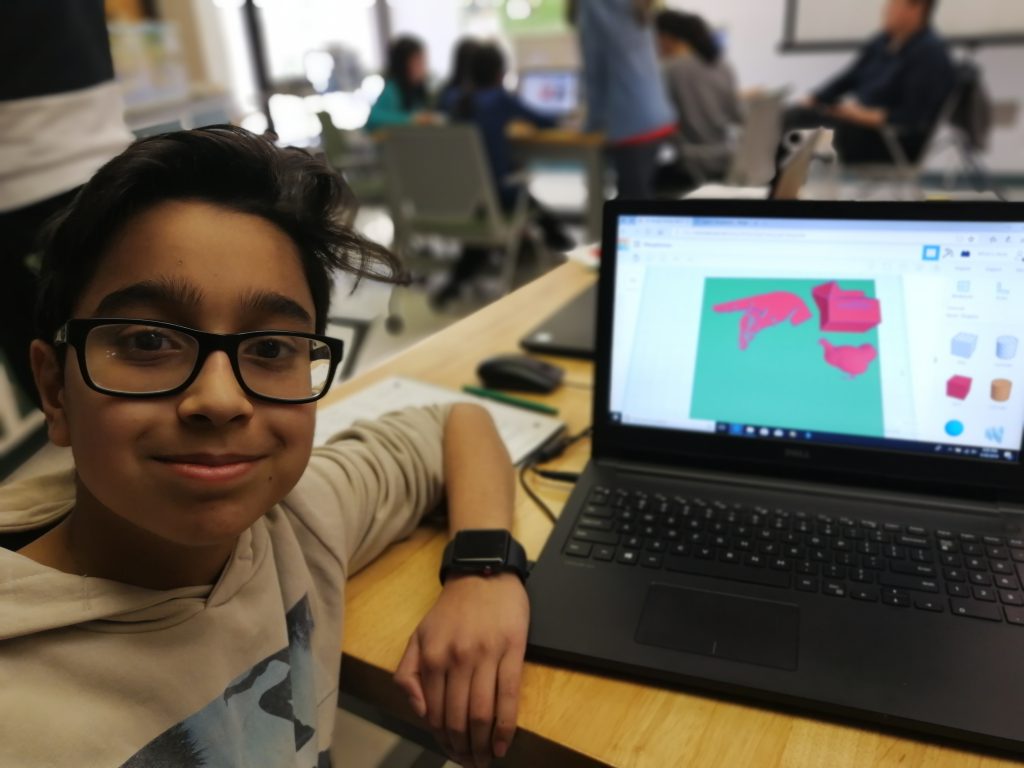
Armaan, Saginaw Arts & Sciences Academy 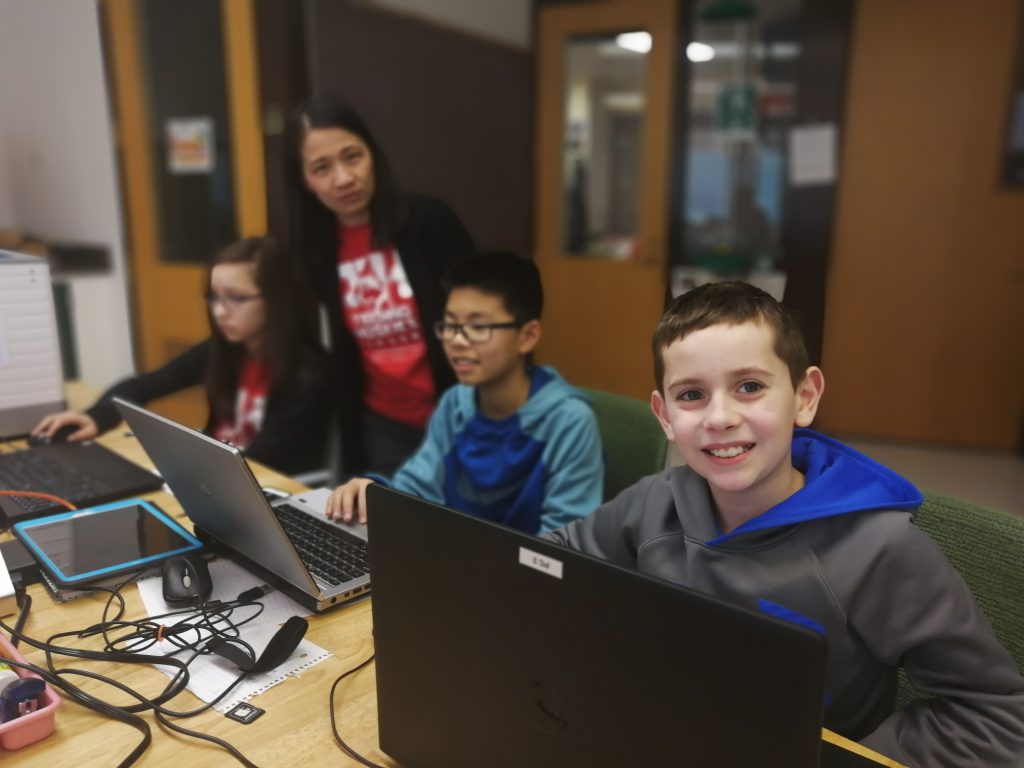
Students from the Jefferson middle school robotic team left to right: Margaret (7th grader), Lisa (mentor), Jonathan (7th grader), and Charlie (6th grader)
The students represented several Midland area schools including Bullock Creek Middle School, H. H. Dow High School, Jefferson Middle School, Northeast Middle School, Saginaw Arts & Sciences Academy, Siebert Elementary School, St. John’s Lutheran Midland, and several home schools.
The project was led by MSU St. Andrews research faculty Tracy Zhang, Ph.D., with the assistance of Janelle Bradley Ph.D., Evelyne Cudel Ph.D., and Nick Henton, with generous support from Dow and the ACS Committee on Chemists with Disabilities.
Story contributor: Maria Dulay
Photo credits: Maria Dulay, Linda Wang and Tracy Zhang



